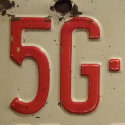
All of the top 5G network operators in the US are moving toward the standalone version of 5G, and plan to launch 5G core networks to handle the upgrade.
However, some are providing much more detail about their plans than others.
Operator | Launch timeline | Core vendors |
AT&T | Not disclosed | Not disclosed |
T-Mobile | Later this year | Cisco and Nokia |
Verizon | Moving traffic to new core in second half of 2020, full commercialization in 2021 | Not disclosed |
Verizon disclosed its standalone 5G launch plans in a press release this week. "By building this 5G core with cloud-native containerized architecture, we will be able to achieve new levels of operational automation, flexibility and adaptability," Bill Stone, Verizon's VP or planning, said in the release. Verizon's new launch timeline largely dovetails with the one Stone laid out early last year.
Verizon also highlighted the key benefits it sees from moving from the non-standalone version of 5G to the standalone version, and launching a dedicated standalone 5G core to do so. The company said it would be able to dynamically allocate network resources to specific customers for specific applications, an offering that falls under the promise of "network slicing" in 5G. Verizon also said it would be able to handle real-time resource management in its radio access network, advanced network analytics, and a more scalable and cost-efficient network architecture, among other benefits.
However, Verizon declined to name its core vendors. "We have several infrastructure vendors on the core side all working together for the new core, so no single specific vendor to call out in this announcement," a Verizon representative wrote in response to questions from Light Reading on the topic.
Verizon's comments on standalone 5G (5G SA) largely dovetail with T-Mobile's announcement on the topic in May. T-Mobile explained that standalone 5G "will eliminate the need for a midband LTE anchor, cutting out some of the limitations experienced today."
All of the industry's early 5G networks use the "non-standalone" version of 5G (5G NSA). That version requires a 4G LTE network to handle things like authentication. However, the "standalone" version of 5G eliminates that requirement, which ought to ease challenges such as the latency involved in handoffs from 4G to 5G and the intermodulation issues that can create signal distortion.
Standalone 5G is supported within the 3GPP's new "Release 16" batch of technologies, finalized last week.
While T-Mobile and Verizon are clearly rushing toward the benefits of standalone 5G, AT&T is far more vague about its plans.
"AT&T is currently developing and testing our next-gen core ('standalone 5G'), to enable cloud-native network function and network slicing, and we will continue investing in our network infrastructure to build out our 5G services," an operator official wrote in response to questions from Light Reading. "Due to competitive sensitivities, we are not able to release the name of vendors we will use for our standalone core, nor are we able to release the names of vendors for our current core."
The three big US operators aren't the only ones moving to standalone 5G. For example, Dish Network has indicated it plans to launch a 5G core in at least one market this year – Dish cannot use the non-standalone version of 5G because it does not operate a 4G LTE network.
Finally, one noteworthy development in the 5G market is the growing number of core vendors. As noted by research and consulting firm Dell'Oro, Ericsson and Huawei command fully half of the $8 billion market for mobile cores, with Nokia, ZTE and Cisco trailing behind. But the 5G market is opening up new possibilities – including the potential of private 5G networks operated by the likes of mining or manufacturing companies – which is drawing in core vendors ranging from Oracle to HPE to Mavenir to Microsoft.
— Mike Dano, Editorial Director, 5G & Mobile Strategies, Light Reading | @mikeddano
About the Author(s)
You May Also Like










